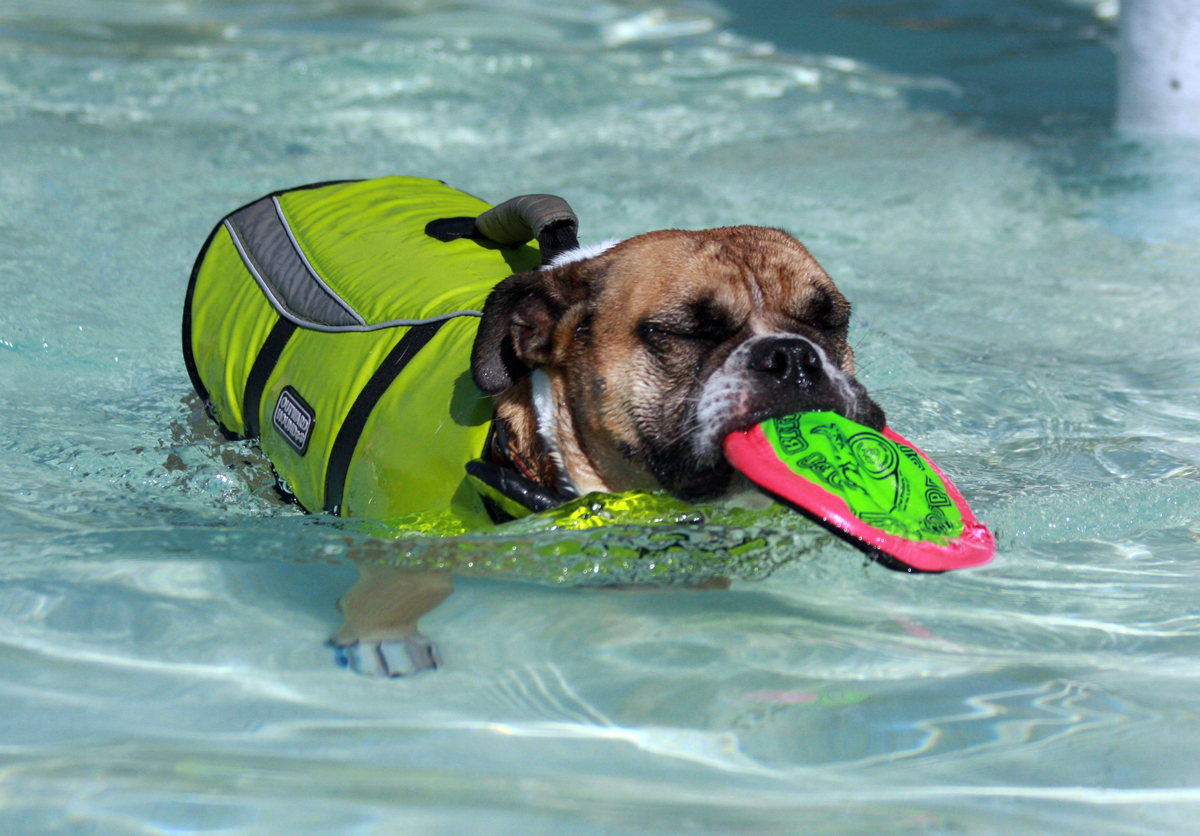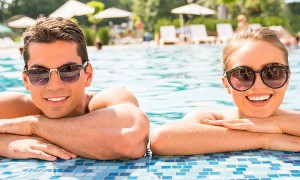In the heat of the summer, there are few better ways to cool off than going for a dip at home in the pool. The fun isn’t lost on our four-legged family members, either! But, there can be very serious consequences if both you and your dog aren’t well versed on the proper safety measures needed before you take your first swim. Here are some precautions and general practices to keep in mind to safely enjoy the summer at home in your pool!

The most important safety precaution you can take is making the time to train your dog how to swim. If you aren’t comfortable with taking on such an involved task as this, consult with an experienced dog trainer. You may also want to think about learning how to properly administer CPR to a dog in the event an accident occurs.
A common misconception with dogs is that all breeds are natural and instinctual swimmers. Some breeds – like the Retrievers, Labradors and Setters – love the water; others like Bulldogs and Dachshunds swim as gracefully as a block of cement. And regardless of breed, all dogs have to first be properly taught how to doggy paddle – never throw a weeks old puppy into the water to learn on its own! It is extremely dangerous and can be traumatic.
One of the biggest hurdles to getting your dog in the pool could just be getting her comfortable with the water itself. If your dog seems hesitant, it may be a good idea to use a kiddie pool to introduce the fun in a more relaxing environment.

Some of the most frequent accidents occur when a dog does not see the edge and slips into the pool. That is why it is necessary to make sure your dog is completely comfortable entering and exiting the pool using the steps and will not panic if she slips. Help your dog always identify the stairs by marking the area with a large visible object, such as a plant, to help steer her in the right direction. If your dog is unable to use the steps to your pool, there are doggy ramps that can be purchased to make that transition all the smoother. Making sure your dog takes the steps will also cut down on the damage that the cement edges of a pool can do to claws and paws.
Another concern is the surface that surrounds your pool. The health of your dog’s paws should also be in the back of your mind if she is excitable and runs around the pool for an extended period of time. Many times these surfaces are hot, damaging and can cause serious harm to a dog’s bare paws.
It is loads of fun playing fetch and watching your dog fly through the air, splashing into your pool to retrieve her favorite toy. However, you also should be taking into account the amount of water your dog is drinking while her mouth may be open holding the stick or toy on her way to the stairs to start the game all over again as too much chlorine intake can make your dog sick. At the end of your swimming session, give your dog a rinse with fresh water after she gets out to get rid of the bacteria and chemicals that may be lingering.

If you have a pup that would never be mistaken for Michael Phelps in the water, a doggy life vest is a great way to make sure your dog doesn’t feel left out. Even if your dog seems more fish than canine, a life vest isn’t a bad option in case they develop a cramp or anything else mid-swim.

If your dog will be spending most of their time outside, consider investing in a pool fence to stop an accident from occurring while you are unable to supervise. If you find the idea of a pool fence unsightly, an invisible fence is a great option. When it is time to close the pool for the colder months, be sure that your pool cover does not have any openings and is secured firmly.
The same diligence that one would use when a small child is around a pool is the same kind of attention that should be paid to your dog. The pool is a great way for all dogs – especially older dogs after confirming with a veterinarian your dog is healthy enough – to get exercise. With these various precautionary steps, you can enjoy the backyard pool with the whole family more worry-free!







Thank you for covering the water drinking. We recently had a friend’s dog die from water intoxication. The dog drank way too much pool water.
I’m sorry to hear that! Yes, it is one of the most common causes of accidents in backyard pools because most don’t realize how toxic some of those chemicals and bacteria can be to dogs!
Thanks for the great article!I will save this article for one of my favorite and if it’s okay to you I will share this to my twitter.